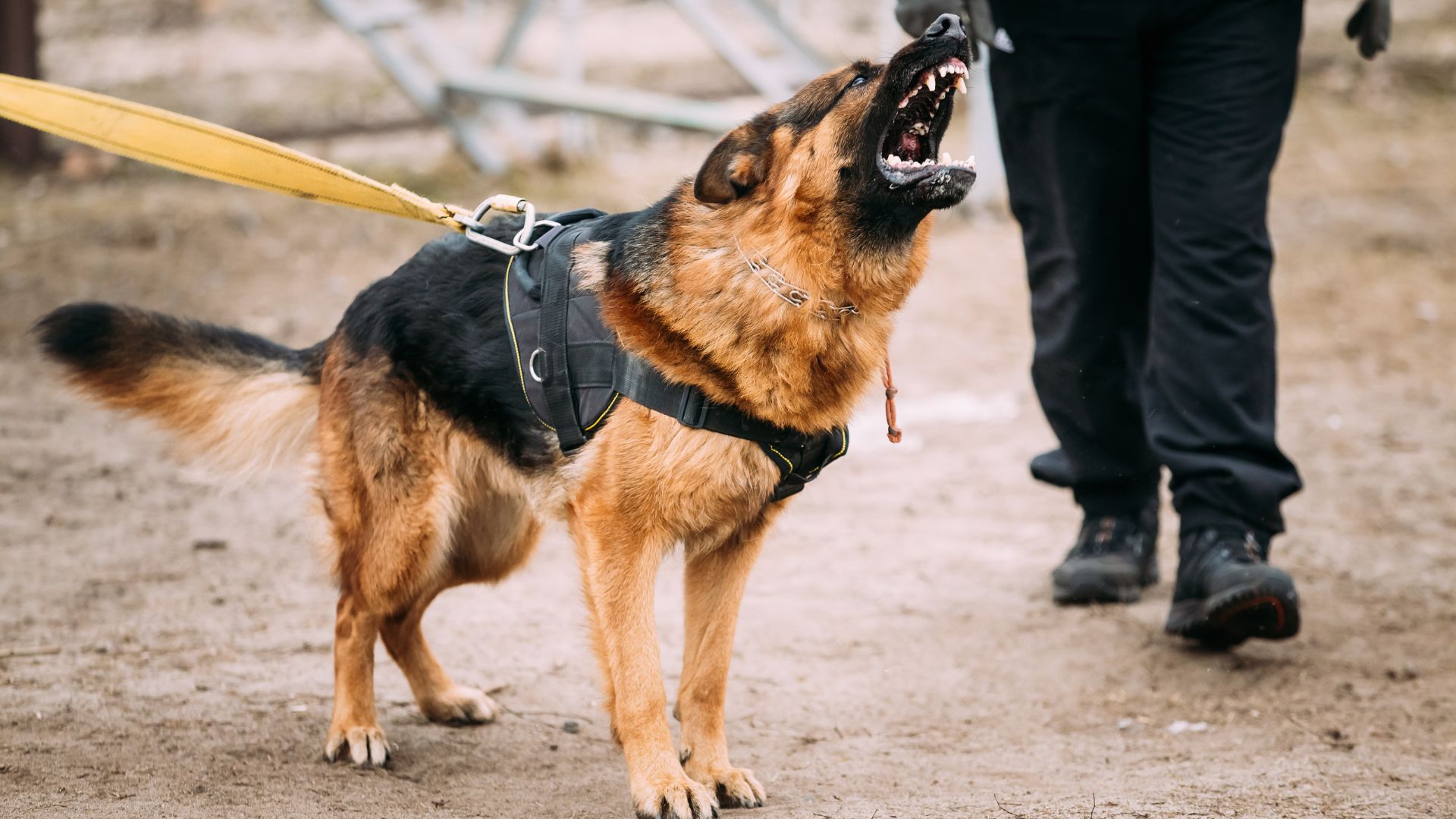In the realm of protection dogs, aggression isn’t mere temperament—it’s a calibrated trait honed by centuries of selective breeding. A large-scale study of dog breeds found that genetics accounts for 60 %–70 % of variation in aggression toward strangers, underscoring the significance of breed-specific predispositions.
However, those numbers don’t tell the whole story—environment, training, and early socialisation play a pivotal role in whether aggressive potential becomes actualised behaviour.
For anyone seeking a dog that offers both guarding instincts and formidable presence, understanding the nuanced interplay of strength, loyalty, and aggression is key. This isn’t about fear—it’s about informed empowerment.
In the following introduction and subsequent breakdown, we’ll explore some dangerous breeds best known for protection roles, carefully distinguishing between controlled assertiveness and unchecked aggression.
Whether you’re a security professional or a dedicated handler, this guide will equip you with expert insights into selecting and managing most protective dog breeds bred for high-stakes, high-responsibility scenarios.
Most Aggressive Dog Breeds For Protection
1. Akita

When you’re looking for a guard dog that blends ancient history with modern protective instinct, the Akita stands out as a dignified sentinel.
With deep roots in northern Japan, this breed has evolved into a guardian not only by appearance but by purpose, making it a powerful option for protection-minded owners.
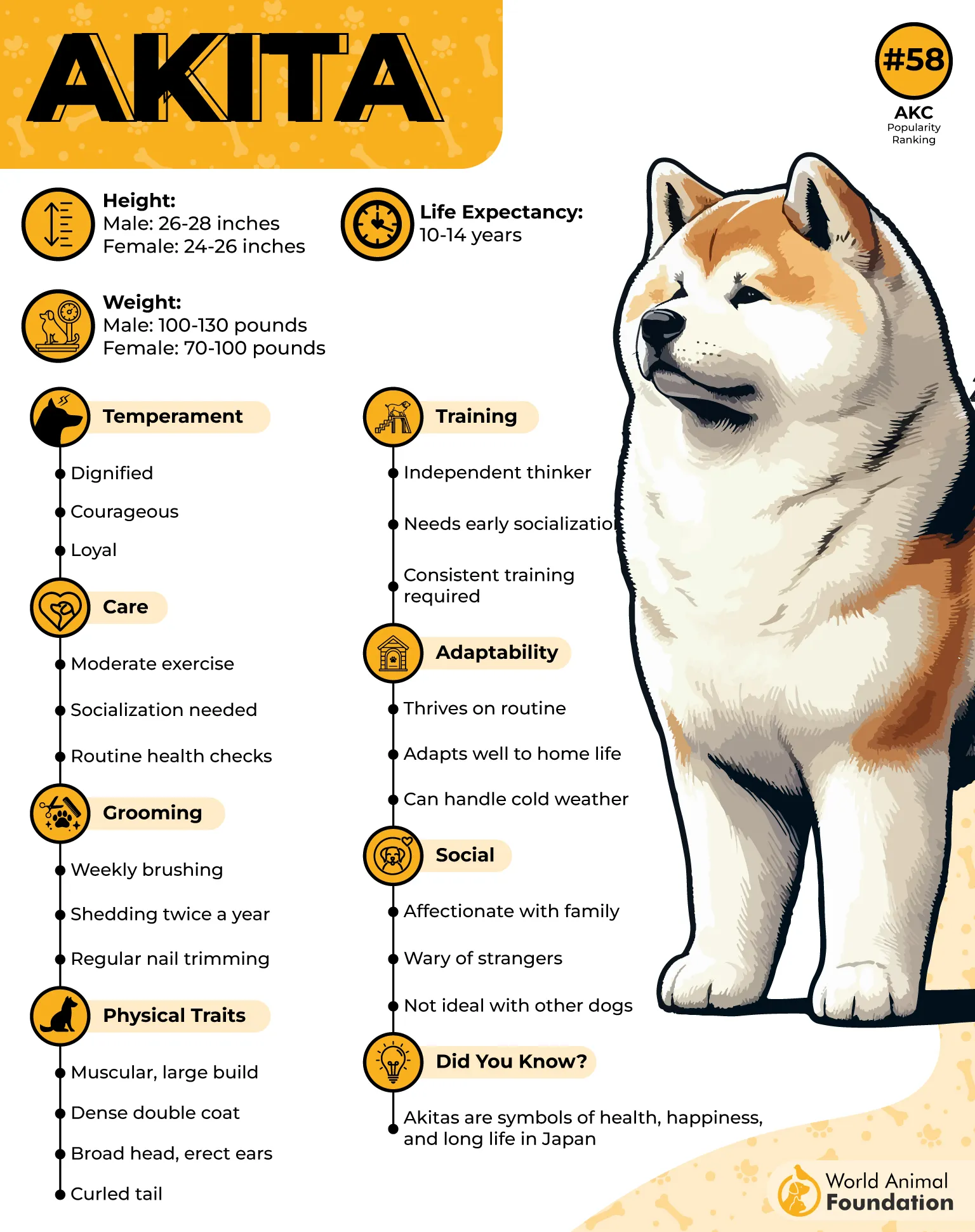
Historically, Akitas were developed for hunting large game like bears and boar in harsh terrain, and over time, they also took on roles as guarding animals for Japanese nobility and estates.
Now that many are kept as devoted family guardians, their ancient lineage gives them an almost instinctive awareness of territory and loyalty.
Training & Handling Needs:
Requires firm, consistent leadership early on and enjoys structured commands with clear boundaries.
Socialisation from a young age is critical so that this strong-willed breed learns to recognise real threats vs. everyday visitors.
Best handled by someone familiar with working or large guard-type dogs; newcomers may find the Akita’s independence challenging.
Compatibility & Lifestyle Fit:
Suited to a home with ample space and experienced handlers who can provide regular exercise and mental stimulation.
May be reserved or aloof with strangers and other animals unless socialised intensively early; not ideal for busy, novice households.
Thrives when bonded to a primary caregiver and given tasks or structure that harness its protective instincts.
On the health front, Akitas are generally robust, but owners should watch for hip dysplasia, autoimmune disorders, and bloat (gastric torsion) given their deep-chested structure.
AKC explains that in terms of temperament and intelligence, Akitas combine calm self-possession with sharp alertness—they aren’t overly demonstrative, but they evaluate and respond when needed. Their intelligence leans toward independent thought, so training must engage rather than overpower.
If you’re seeking the best guard dog breed with a noble heritage, unwavering loyalty, and serious protective instinct, the Akita can deliver—provided you’re ready to match its commitment with consistent leadership and structure.
2. Dogo Argentino
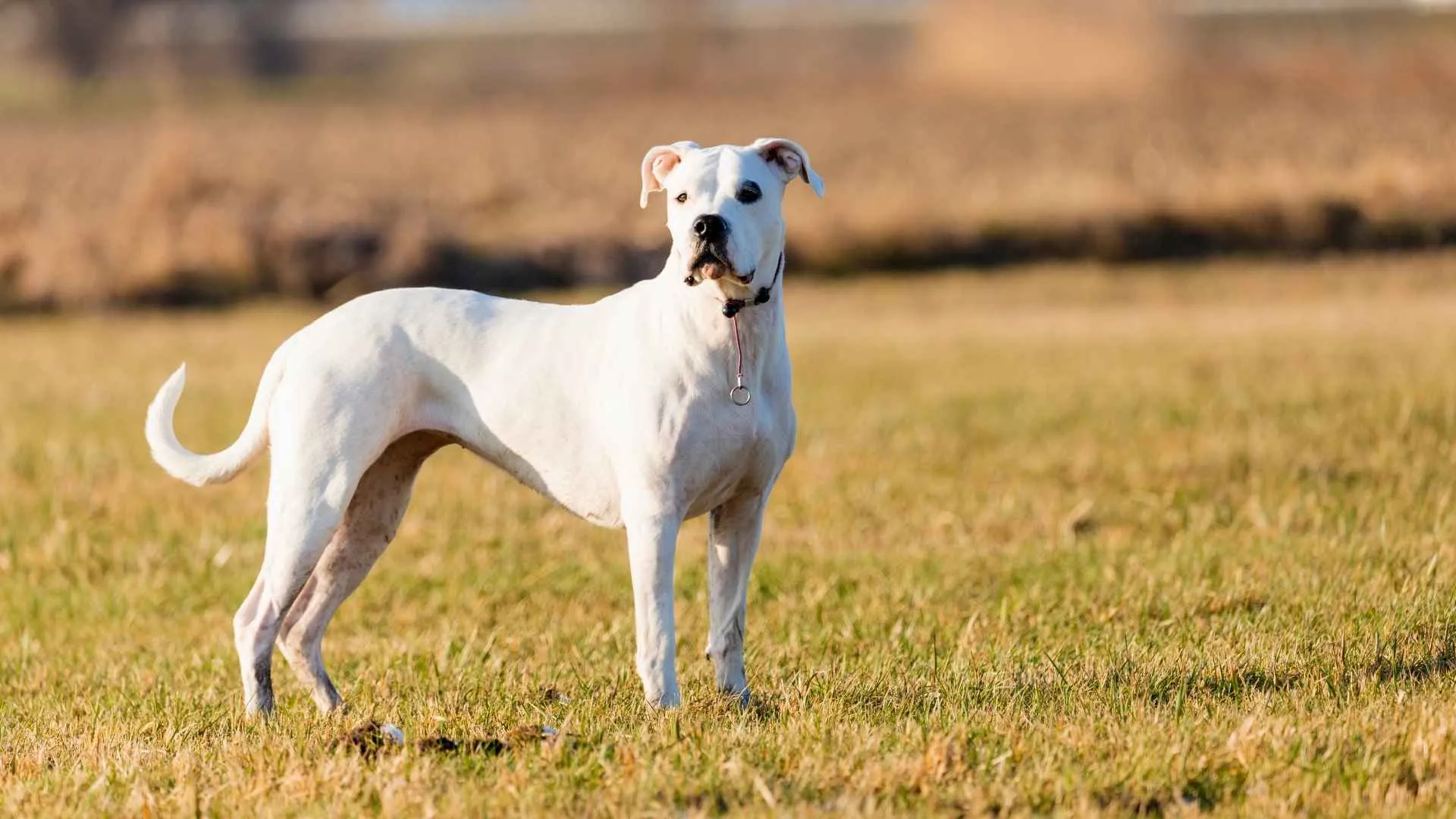
The Dogo Argentino commands attention for its striking build and unshakable confidence. Known for courage and stamina, it was bred to face formidable game, and those traits now make it a strong, loyal protector.
It stands out for its balance of composure and power—never reckless, but always ready to defend.

Born in Argentina for hunting wild boar, the Dogo’s heritage gave it a fearless, athletic spirit. Over generations, selective breeding refined its protective instinct, blending athleticism with loyalty. Its physical strength and mental steadiness make it both a deterrent and a dependable guardian.
Training & Handling Needs:
Benefits from advanced obedience training to channel strength into discipline.
Responds best to confident handlers who use structured routines and clear boundaries.
Requires ongoing socialisation to distinguish threats from neutral encounters.
Compatibility & Lifestyle Fit:
Excellent fit for active, experienced owners with time for physical challenges.
Best suited for properties with space to roam and engage their energy.
Reserved with strangers; thrives in small, consistent family units.
PetMD notes that, healthwise, Dogos are generally hardy but need monitoring for hip dysplasia and deafness common in white-coated breeds.
They show a remarkable ability to assess risk quickly, a mark of their instinctive intelligence. When raised with guidance and respect, the Dogo Argentino becomes a guardian of both home and heart.
3. Bullmastiff
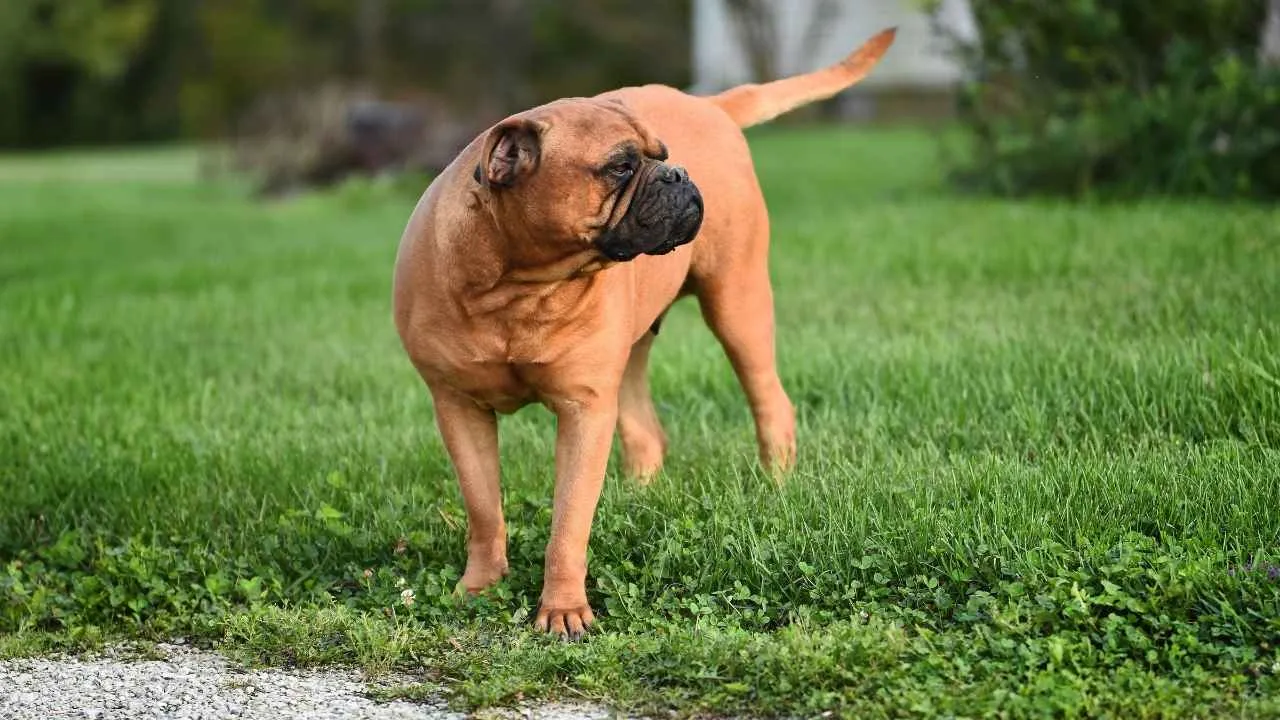
The Bullmastiff’s quiet strength and stoic watchfulness make it a master of subtle protection. It doesn’t bark without purpose, earning its reputation as a “silent guardian.” Its calm temperament, paired with immense physical power, sets it apart as a deterrent that seldom needs to prove itself.

Historically bred in 19th-century England to catch poachers, the Bullmastiff learned to subdue intruders with control, not chaos. This balance of aggression and restraint remains its hallmark. Its heritage as a night estate protector still shines in its keen sense of boundary awareness and devotion.
Training & Handling Needs:
Learns best through calm consistency and firm leadership.
Early socialisation is crucial to building tolerance and confidence.
Enjoys obedience routines that engage both strength and patience.
Compatibility & Lifestyle Fit:
Ideal for families seeking a protective yet affectionate companion.
Suits moderately active households with a secure yard.
Protective instinct makes it alert but composed around loved ones.
WebMD claims that with proper care, Bullmastiffs live 8–10 years and remain generally healthy, though joint issues can arise.
Their intelligence leans toward emotional awareness—they sense moods and adjust behavior subtly. For owners seeking an intuitive, gentle giant with formidable protective instincts, the Bullmastiff fits perfectly.
4. Cane Corso
The Cane Corso exudes quiet dominance, carrying centuries of Roman guard heritage in every motion. Its presence alone commands respect, but its intelligence and loyalty give it purpose beyond intimidation. It’s not just a guard dog—it’s a strategist in canine form.
Originally used by Roman soldiers and later by Italian farmers, this breed’s protective drive developed through practical roles—defense, herding, and companionship.
That versatility created a dog capable of discerning context, reacting only when truly needed. Its balance of control and confidence defines the modern guardian ideal.
Training & Handling Needs:
Requires strong leadership and daily mental stimulation.
Responds well to task-oriented training and working routines.
Benefits from early exposure to people and structured environments.
Compatibility & Lifestyle Fit:
Works best in spacious homes with confident owners.
Thrives with owners who offer both discipline and affection.
Forms intense bonds and may guard family members selectively.
Health concerns include hip dysplasia and eye issues, but regular exercise and weight management help maintain vigor.
The Cane Corso scores high in working intelligence—eager to learn and motivated by purpose. For those who appreciate composure backed by capability, this breed offers unmatched loyalty.
5. Doberman Pinscher
The Doberman Pinscher embodies elegance with precision. Agile, alert, and loyal, it’s often called the “gentle warrior” of the guard dog world. Its intelligence and empathy make it one of the most dependable breeds for both family and professional security.
Created in the late 19th century by tax collector Louis Dobermann, this breed was designed for versatility—guarding, police work, and companionship. Generations of refinement have produced a dog that anticipates threats instinctively while maintaining restraint and obedience.
Training & Handling Needs:
Excels under structured, reward-based training.
Needs consistent mental and physical challenges to prevent boredom.
Responds well to confident, calm owners who provide clear roles.
Compatibility & Lifestyle Fit:
Adapts to family life with proper exercise and interaction.
Ideal for active individuals seeking both companionship and protection.
Bonds deeply, often shadowing its favorite person loyally.
With lifespans averaging 10–13 years, the Doberman remains generally healthy with vigilance for cardiac and joint conditions.
Its intelligence is one of the highest among working dogs, showing both intuitive problem-solving and emotional sensitivity. As a protector, it represents precision, grace, and trust personified.
6. German Shepherd
Few breeds rival the German Shepherd’s blend of loyalty, intelligence, and courage. Revered globally as a service and police dog, it’s the model for reliability under pressure. Its adaptability allows it to excel in diverse environments, from family life to field duty.
Developed in late 19th-century Germany to herd and protect flocks, it evolved into a multipurpose working dog and one of the most popular guard dog breeds valued for endurance and judgment.
That heritage forged an animal capable of anticipating commands and assessing threats with almost humanlike insight.
Training & Handling Needs:
Learns quickly and enjoys consistent reinforcement through positive methods.
Requires daily challenges—both physical and intellectual.
Thrives with handlers who lead with patience and respect.
Compatibility & Lifestyle Fit:
Excellent for families and professionals needing an alert yet affectionate guardian.
Adapts well to both suburban and rural living when exercised properly.
Attentive to children and bonds closely with all household members.
With lifespans of around 9–13 years, this breed benefits from joint and spine care due to its structure. Its intelligence ranks among the world’s top working dogs, marked by obedience, adaptability, and emotional steadiness. The German Shepherd’s heart is as loyal as its mind is sharp.
7. Rottweiler
The Rottweiler is the embodiment of confidence, strength, and unwavering loyalty. Its calm gaze and muscular frame tell of a guardian that values control over chaos. It protects not through noise, but through presence and precision.
Tracing back to Roman drover dogs, Rottweilers later worked as cattle herders and butchers’ protectors in Germany. Their intelligence and adaptability made them reliable guardians and working partners. Today, those traits translate into a balanced protector that commands both respect and affection.
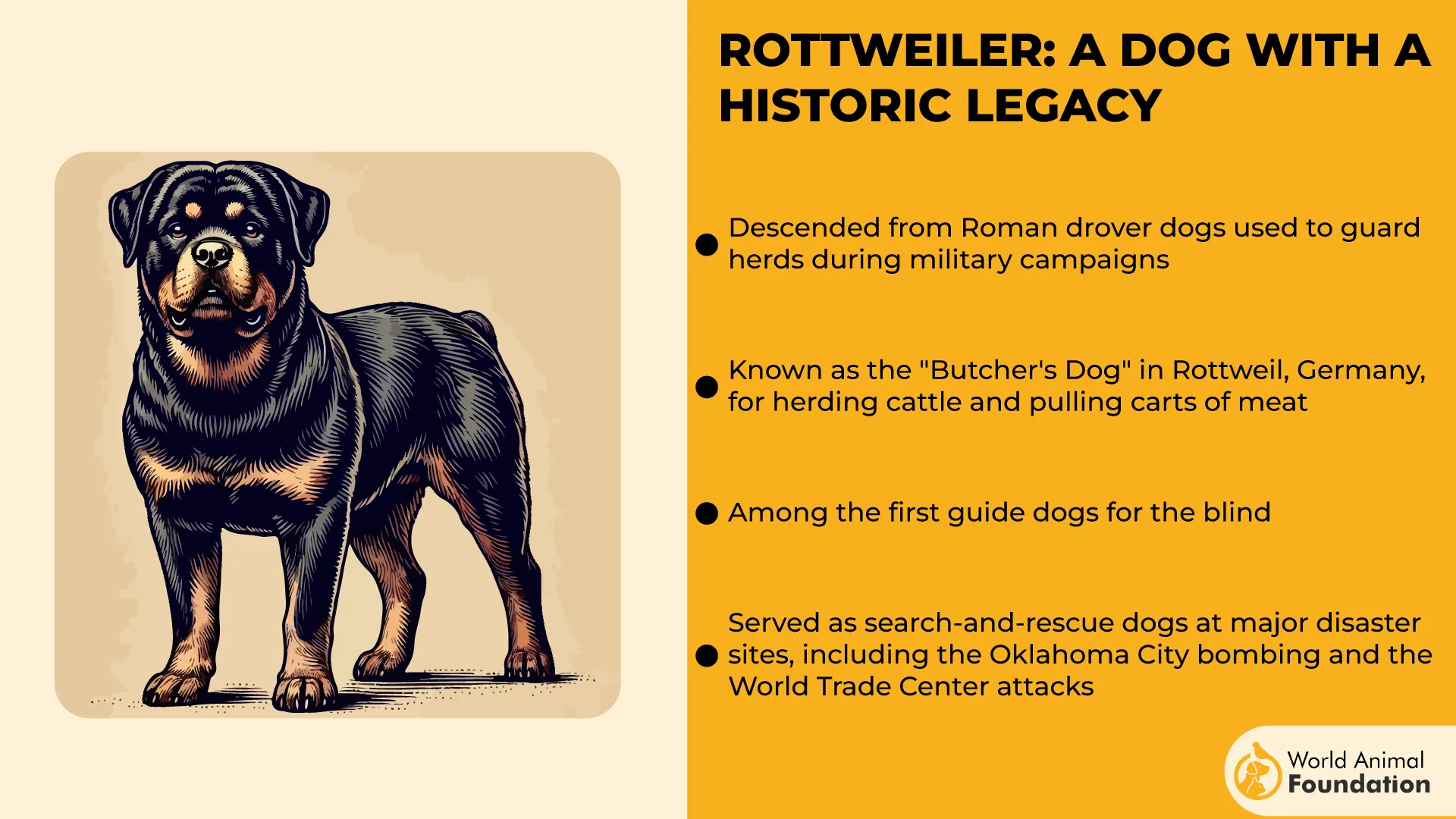
Training & Handling Needs:
Responds best to confident, experienced trainers who offer fairness and structure.
Requires consistent early socialisation to maintain composure around new people.
Enjoys purposeful training that engages strength and problem-solving.
Compatibility & Lifestyle Fit:
Perfect for families who value security paired with companionship.
Needs room to move and thrive—ideal for larger homes or estates.
Protective yet affectionate, forming deep loyalty toward its family.
Health considerations include hip issues and cardiac concerns, manageable through good breeding and care. The Rottweiler’s intelligence is both analytical and emotional; it reads situations before acting. Among protection dogs, it remains a timeless example of power balanced by unwavering devotion.
FAQs
Are aggressive dog breeds always dangerous, or can they be trained for protection safely?
Aggressive dog breeds aren’t automatically dangerous. With proper training, early socialization, and consistent structure, they can become highly reliable protectors. Their strong instinct to guard, when managed responsibly, transforms into controlled confidence rather than uncontrolled aggression.
What warning signs indicate a protection dog may be too aggressive for daily life?
Warning signs include unprovoked lunging, growling at familiar people, or reacting fearfully to everyday noises or other pets. If a dog cannot calm down after a perceived threat passes, professional evaluation and retraining are essential to ensure safety and balance.
How much training does an aggressive dog need to be an effective guard dog?
A potential guard dog needs structured obedience training from an early age, ideally under an experienced handler. Regular reinforcement, exposure to diverse environments, and firm but positive leadership help refine instincts, ensuring the dog protects rather than intimidates.
Conclusion
Even the most dangerous dog breeds can become excellent guard dogs with proper training and early socialization. Their protective nature, when shaped with consistent guidance, turns powerful dogs into loyal family pets.
Certain breeds like Pit Bulls, Belgian Malinois, and Staffordshire Bull Terriers may have a bad reputation, yet with the right training, they prove highly trainable and devoted. Even large dogs such as Great Danes or Rhodesian Ridgebacks can deter intruders safely under calm leadership.
Dog owners should see these strong, intelligent companions as guardians, not threats. With love, patience, and structure, even the most powerful breeds become great guard dogs and trusted family dogs.


